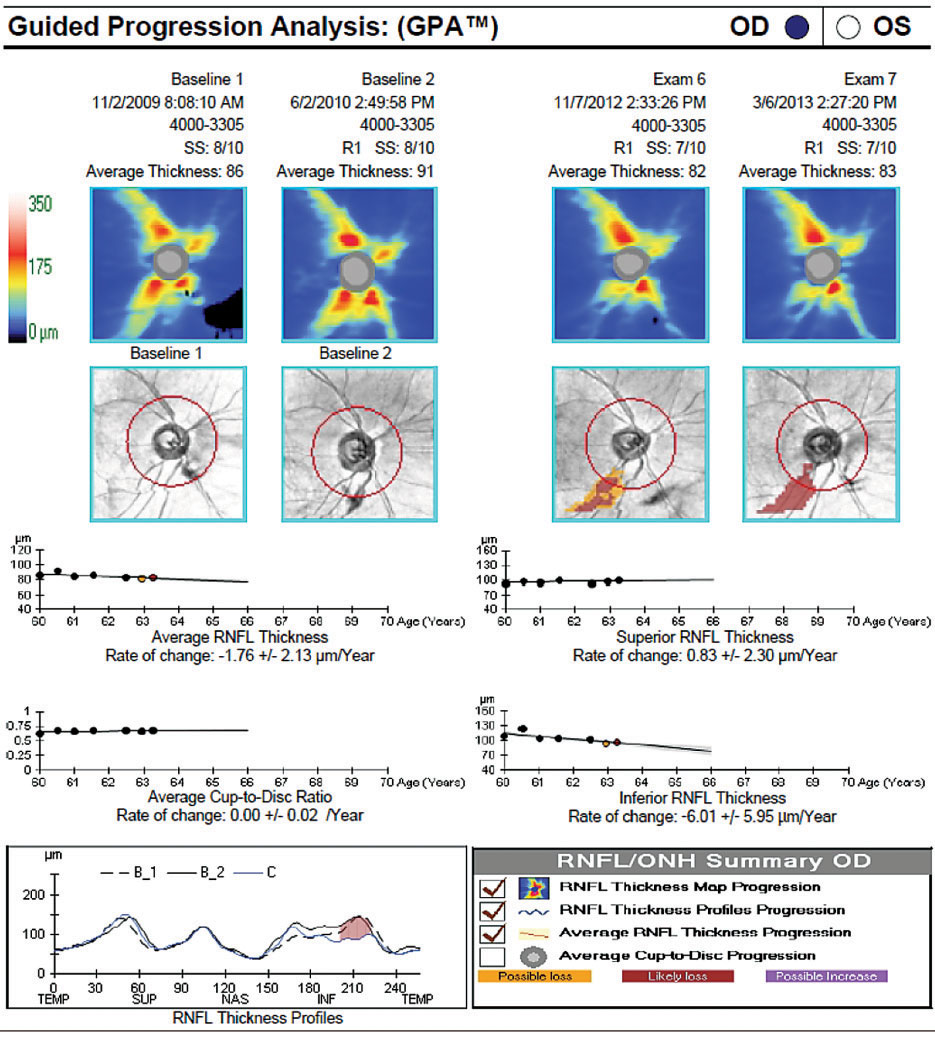 |
| Researchers observed an instant reduction in IOP of more than 30mm Hg in the multi-treated and a few of the mono-treated patients. Photo: Danica J. Marrelli, OD. Click image to enlarge. |
The most effective IOP-lowering treatment for glaucoma patients can be a moving target long-term, with clinicians often having to change or add drops to the regimen, or even suggest surgery in some cases. New research published in Acta Ophthalmologica found that multi-treated glaucoma participants fared better than those on a single drug when disease progression was measured at three years.
The investigation, part of the ongoing Glaucoma Intensive Treatment Study, compared initial intensive treatment using multiple drug therapy with eye drops containing a fixed combination of drugs from two different classes in one bottle, plus a single drug from a third class, followed by 360° laser trabeculoplasty vs. conventional treatment with monotherapy. A total of 242 newly diagnosed open-angle glaucoma patients who were treatment-naïve and had early to moderate glaucomatous VF loss were included.
The study’s findings suggest that intensive initial IOP-lowering treatment with several drugs results in a slower rate of perimetric progression than conventional escalating treatment during the first three years post-diagnosis, with no large difference in the frequency of adverse events, the researchers noted.
The median untreated baseline IOP was 24mm Hg in both arms. The average reduction was about 10mm Hg in multi-treated individuals and approximately 7mm Hg in the mono-treated group. The reduction in IOP was almost constant over the three-year follow-up in both groups (17mm Hg in the mono arm and 14mm Hg in the multi-treatment arm).
The median perimetric rate of progression was -0.5%/year in the mono-treated group and -0.1%/year in the multi-treated group.
Interestingly, the researchers found an immediate reduction in IOP of more than 30mm Hg in the multi-treated patients, but also in a few of the mono-treated individuals.
During the course of the study, treatment could be changed or intensified, as necessary, at the discretion of the treating ophthalmologist and in consultation with the patient if rapid progression was observed, IOP reduction was considered insufficient or side effects were noted. Treatment was intensified in 42% of the mono-treated patients and in 7% of the multi-treated patients. On the other hand, treatment was reduced in 13% of the multi-treated patients.
More patients in the multi-treated group had documented adverse events and serious adverse events associated with glaucoma medication than in the mono-treated group (31% and 21%, respectively).
Further follow-up will show whether this difference is sustained over time, the authors suggested.
Bengtsson B, Lindén C, Heijl A, et al. The glaucoma intensive treatment study: interim results from an ongoing longitudinal randomized clinical trial. Acta Ophthalmologica. July 29, 2021. [Epub ahead of print]. |

